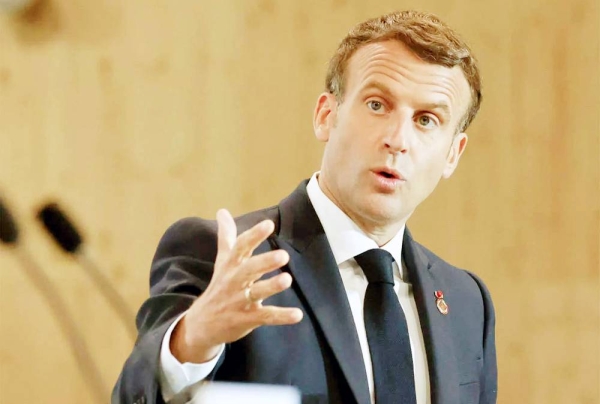
The global dash for gas amid the Ukraine war will accelerate climate breakdown and could send temperatures soaring far beyond the 1.5C limit of safety, analysis has shown.
If all of the new gas projects announced in response to the global gas supply crunch are fulfilled, the resulting greenhouse gas emissions would add up to about 10% of the total amount of carbon dioxide that can safely be emitted by 2050.
As that gas is in addition to current production of fossil fuels, that would threaten to derail the Paris climate agreement, according to Climate Action Tracker, a group of analysts, in a report published on Thursday at the Cop27 UN climate talks in Sharm el-Sheikh, Egypt.
There will be an oversupply of liquefied natural gas across the world, reaching about 500 megatonnes of LNG by the end of this decade, according to the new data. The amount of oversupply will be about five times as much gas as the EU imported from Russia last year, and about twice as much as Russia’s total gas exports.
Bill Hare, the chief executive of Climate Analytics, one of the partner organisations behind Climate Action Tracker, told the Guardian that the world had “overreached” in its attempts to fill the hole left by Russian gas. “There will be just too much,” he said. “The volume of import capacity of gas being built in Europe far exceeds the replacement needs.”
The group forecasts an increase in capacity of 235% between now and 2030.
Panic over keeping people warm in winters to come, and keeping the lights on from gas-fired power generation, has led governments in Europe that previously relied on gas from Russia to push for new supplies from a range of other sources.
Some governments, including Germany, have said the drive for new gas import sources will not prevent them achieving their climate goals, and that the gas contracts will be short-term and will stipulate that the gas infrastructure will be packed up before the end of its engineering lifespan.
But Hare said this would be difficult to ensure, as once the infrastructure was built the investors would have an interest in keeping it in use.
The International Energy Agency warned last year that no new fossil fuel development could take place if the world were to stay within 1.5C of pre-industrial temperatures, the goal confirmed by countries at the Cop26 climate talks in Glasgow last year.
Climate Action Tracker found gas production and import capacity was being expanded across the world, in Africa, North America, Asia and Australia, as well as Europe.
“We are witnessing a major push, which could cause global emissions to breach dangerous levels,” said Hare. “Increasing our reliance on fossil gas cannot be the solution to today’s energy and climate crises anywhere.”
The analysis also predicted that global heating would reach 2.4C above pre-industrial levels by 2100, based on the policies and measures agreed by governments to date.
At the Cop27 conference, the spotlight has fallen on African gas supplies in particular. Soaring gas prices internationally have encouraged African countries with gas reserves to seek investors to help exploit them. Many world leaders are sympathetic, and some EU countries are considering African gas as a replacement for Russian supplies – but some African leaders, including Kenya’s president, William Ruto, are concerned.
Many civil society groups have called for the expansion of renewable energy instead, saying exploiting oil and gas in Africa was unlikely to benefit ordinary people on the continent, but would produce a bonanza for multinationals and the elite in the countries concerned, while the poor would suffer worse effects from the climate crisis.
Ina-Maria Shikongo, a campaigner at Fridays for Future, of Windhoek, Namibia, said: “Pushing for gas development in Africa is literally telling global citizens and victims of the climate emergency their lives do not matter. And African lives actually matter.”
Investment in renewable energy in Africa still lags behind, however. A separate analysis published by BloombergNEF at Cop27 showed that there was no rebound in investment in renewable generation in Africa after the Covid-19 pandemic.
Last year, only $2.6bn (£2.3bn) of capital was used for new wind, solar, geothermal or other renewable power-generating projects in Africa, the lowest in 11 years, according to the analysis. The continent accounted for just 0.6% of the $434bn invested in renewables worldwide.
The authors said the poor results could not be blamed on any lingering effects of the pandemic. While renewables investment globally increased 9% from 2020-2021 to reach an all-time high, renewables investment in Africa slipped 35% year-on-year.












